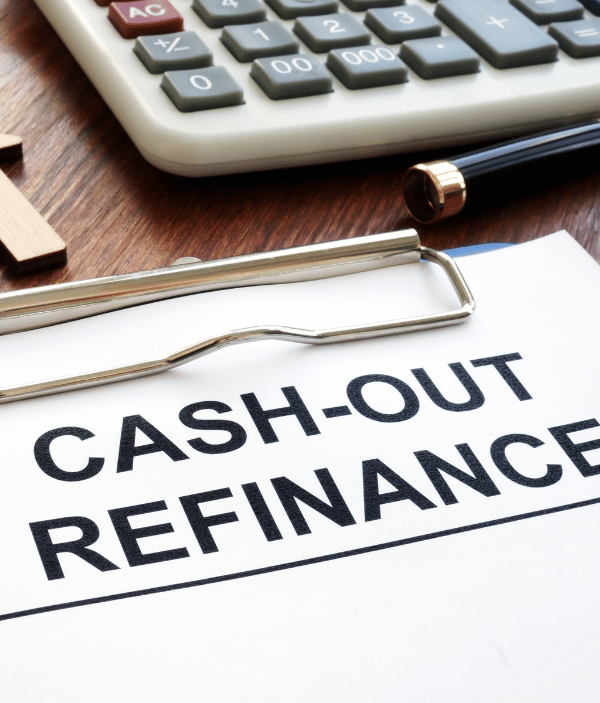Refinancing your mortgage in Texas is a significant financial move, but with the right guidance, it can be a smooth and rewarding process. Homeowners throughout the state trust our dedicated team for clear advice, personalized loan options, and a streamlined experience from start to finish. Whether your goal is to reduce your monthly payment, shorten your loan term, or tap into your home’s equity for major expenses, we’re here to help you make the most of your refinancing opportunity. With competitive rates, honest communication, and a strong reputation for results, we’re proud to support Texans in building a stronger financial future.
How Refinancing Your Mortgage Can Lower Your Costs
When Is the Right Time to Refinance Your Home in Texas?
Many Texas homeowners wonder when it makes sense to refinance. The answer depends on your current loan terms and long-term goals.
You may want to consider refinancing if your adjustable-rate mortgage is about to reset at a higher rate. Switching to a fixed-rate mortgage can provide more stability, especially when rates are expected to rise.
It can also be a smart move to refinance if you qualify for a lower interest rate than the one you currently have. This could reduce your monthly payments or allow you to pay off your home sooner.
Before you refinance, make sure to compare offers from multiple lenders. A better rate can save you money over time, but choosing the wrong terms can cost more in the long run. Careful planning and the right lender make all the difference.
Understanding the Difference Between Adjustable and Fixed Rate Mortgages
If you’re thinking about refinancing, it’s important to understand how adjustable rate mortgages and fixed rate mortgages work. The Consumer Financial Protection Bureau highlights several key differences between the two.
An adjustable rate mortgage (ARM) often starts with a lower interest rate, which can make it easier to qualify. This option is commonly offered to first-time homebuyers or those with limited credit history. While the initial rate may be attractive, it can change over time. The interest rate adjusts periodically based on market conditions and a set financial index, which means your monthly payment could increase.
A fixed rate mortgage offers more consistency. The interest rate remains the same for the entire life of the loan, which helps with long-term budgeting and financial planning. Borrowers with stronger credit profiles are more likely to qualify for this type of loan.
If you currently have an ARM and want predictable monthly payments, refinancing into a fixed rate mortgage may provide the stability you’re looking for.
How a Cash-Out Refinance Works
As you pay down your mortgage and your home’s value increases, your equity grows. Equity builds in two ways: when property values rise in your area and when you reduce the balance on your existing mortgage through monthly payments.
A cash-out refinance allows you to access some of that built-up equity. It involves replacing your current mortgage with a new one for a larger amount. The difference between what you owe and the new loan amount is paid out to you in cash at closing.
Homeowners use cash-out refinances for a variety of reasons. Many choose to fund home improvements, cover major expenses, or consolidate high-interest debt into a single, more manageable payment.
If you are considering tapping into your home equity, contact us today to learn whether a cash-out refinance is the right option for your financial goals.
Refinancing an Adjustable Rate Mortgage
If you are thinking about refinancing an adjustable rate mortgage (ARM), it is important to look beyond another low-rate ARM. While the initial savings might seem appealing, the interest rate will eventually adjust again, possibly reaching levels equal to or higher than your current rate.
A better long-term option may be to refinance into a fixed rate mortgage. Fixed rates provide stability by keeping your interest rate the same for the life of the loan. This can protect you from rising rates and help you save money over time.
If you qualify for a fixed rate mortgage, refinancing out of your adjustable loan can lead to more predictable payments and long-term financial peace of mind.
Refinancing a Fixed Rate Mortgage
Refinancing a fixed rate mortgage only makes sense when you can secure a new loan with a meaningfully lower interest rate. Switching to an adjustable rate mortgage for the sake of a temporary discount is rarely worth the long-term risk.
Focus on finding a new fixed rate that is at least one percent lower than your current rate. Refinancing for a smaller reduction – such as 0.10 to 0.50 percent – may not provide enough savings to justify the closing costs and fees involved.
Before refinancing, compare offers carefully and make sure the numbers work in your favor. A significant rate drop can help reduce monthly payments, lower total interest costs, and shorten the life of your loan.
Steps to Take When Exploring a Refinance
The Consumer Financial Protection Bureau offers helpful resources for homeowners looking to refinance. Before committing to any loan, it is important to take the right steps to make sure you are getting the best deal.
Here are some key steps to follow:
-
Get financially prepared
Check your credit score, organize your financial documents, and determine how much you can afford in monthly payments. -
Review your current mortgage
Think about whether you have a fixed or adjustable rate, and choose your refinancing strategy based on your goals. -
Explore loan options
Look into different loan types, such as fixed rate, cash-out refinance, or rate-and-term refinancing, depending on your needs. -
Compare offers from multiple lenders
Gather quotes from various lenders and compare interest rates, fees, and terms. -
Choose the right mortgage
Select the loan that offers the greatest long-term savings and fits comfortably within your budget.
If you have questions about refinancing your Texas mortgage, feel free to reach out. Our team is here to help you make an informed decision.
VA Lending Locations
Texas VA Loans, Laredo TX, Wichita Falls TX, Garland TX, San Antonio TX, Corpus Christi TX, Houston TX, Fort Worth TX, Dallas TX, El Paso TX Colorado, Colorado Springs CO
VA Lending Resources
How to Get a VA Loan in Texas, VA Lending Guide Fort Worth, TX










